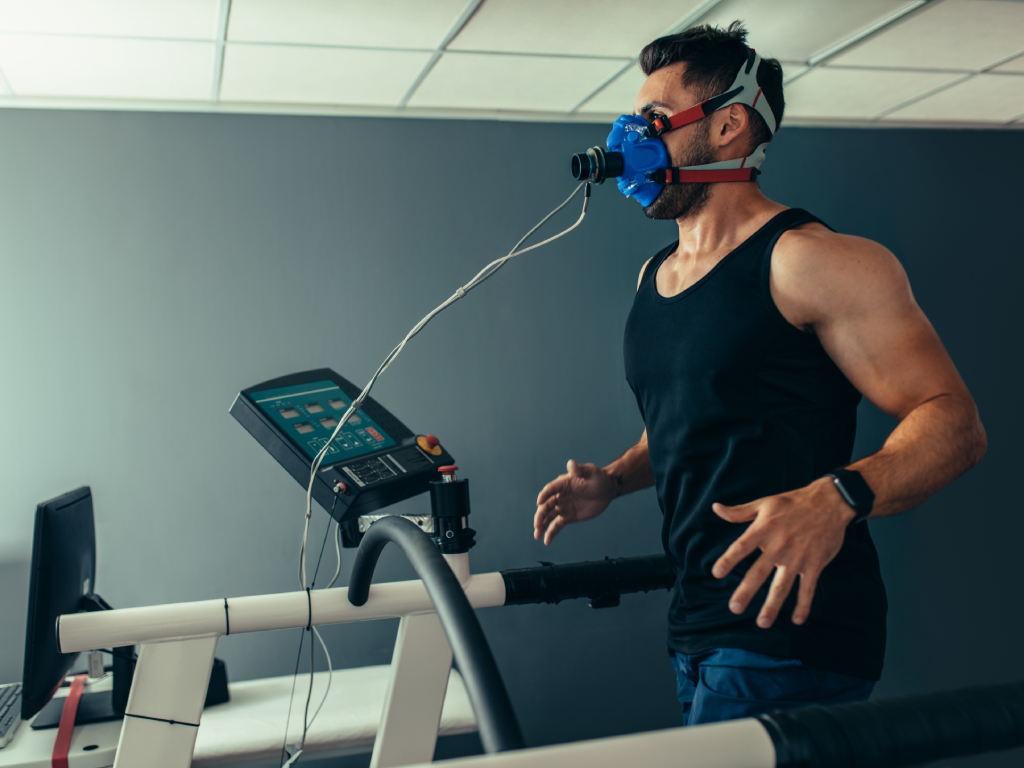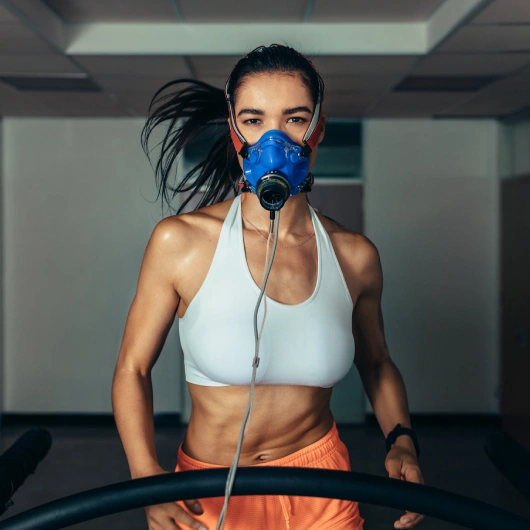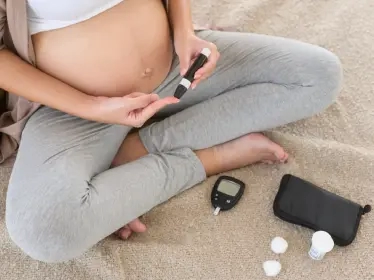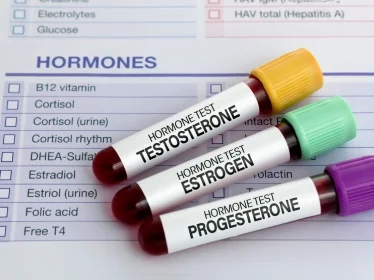
Imagine training for months without knowing whether your cardiorespiratory fitness is improving. That’s where VO2 max testing comes in. Often regarded as the gold standard for assessing aerobic fitness, it shows exactly how efficiently your body uses oxygen during exercise, giving athletes and health-conscious individuals an inside look at their cardiovascular performance.
In Singapore, more people are turning to VO2 max testing through health screening and sports performance programmes. It sets a reliable baseline and tracks VO2 max improvements over time, turning blind effort into purposeful training and helping you avoid the risks of overexertion without guidance.
Below, we explain what a VO2 max test measures, how it is done and who might benefit.
What is VO2 max testing and why it matters
A VO2 max test measures the maximum amount of oxygen your body can extract effectively for metabolism during activities. It reflects how well the lungs deliver oxygen, how effectively the heart pumps it through the bloodstream, and how efficiently your muscles use it to produce energy.
How is a VO2 max test done?
The test is usually performed on a treadmill or stationary bike.
- You wear a face mask connected to specialised equipment that analyses oxygen intake and carbon dioxide output.
- Trained staff monitor your ECG, breathing pattern and any symptoms throughout the test to ensure safety.
- Intensity increases gradually until you reach maximum effort.
The VO2 max test itself usually takes 10 to 20 minutes, with additional time needed for consultation, setup, recovery and any review of results.
What does VO2 max test actually measure
Beyond how the test is done, the real value of a VO2 max test lies in what it shows you. Your result is expressed as the amount of oxygen your body can use in one minute, adjusted for body weight in millilitres per kilogram per minute (ml/kg/min).
This figure matters because it reflects three main areas:
How well your body takes in and uses oxygen (Oxygen Uptake and Utilisation)
VO2 max reflects the maximum amount of oxygen the body can use during exercise. It reveals how efficiently oxygen moves from the lungs into the bloodstream and is delivered to working muscles.
How your heart and muscles work together (Cardiovascular and Muscular Efficiency)
A higher VO2 max means your heart pumps blood more effectively and your muscles make better use of the oxygen they receive. This leads to stronger stamina and quicker recovery. It also reflects a healthy circulatory system, red blood cells and lung function.
Your baseline marker and progress tracker
VO2 max is often used as a baseline marker in sports performance. Runners, for example, commonly take the test on a treadmill to track endurance and improvement. By repeating the test at intervals, it becomes easier to see how training and lifestyle changes are making a difference.
Who should consider a VO2 max test?
- Competitive athletes who want to optimise training and performance
- Active individuals interested in tracking their fitness and heart health
- Individuals with cardiovascular risk factors seeking deeper assessment
Benefits of VO2 max testing for performance and health
Next, find out how VO2 max testing compares with other cardiac fitness assessments.
A VO2 max test provides valuable insights into overall fitness and cardiovascular function.

Key benefits include:
- Accurate measure of aerobic capacity – shows how efficiently your body uses oxygen during exercise.
- Baseline for tracking progress – helps monitor changes over time and evaluate the effect of training or lifestyle adjustments.
- Endurance and stamina insights – highlights aerobic efficiency and performance potential.
- Early indicators of cardiovascular health – reveals how well your lungs, heart, and muscles work together.
- Support for both fitness and preventive health goals – useful for performance optimisation and long-term wellness.
VO2 max testing and other cardiac fitness assessments
Different tests answer different questions. The table below shows what each assessment measures, how it is performed and who it may be most useful for.
| Test | What it measures | How is it done | Useful for |
| VO2 max test | Aerobic capacity, oxygen efficiency, endurance potential | Performed on a treadmill or cycle with breathing mask and gas analysis | Athletes tracking progress, individuals establishing a fitness baseline, preventive health screening |
| Treadmill Stress Test (Exercise ECG) | Heart's electrical rhythm and blood supply response to exertion, including assessment for exercise-induced ischaemia | Electrodes are attached to the chest, arms, and legs while walking or running on a treadmill, with continuous ECG and blood pressure monitoring during graded activity | Detecting restricted blood flow or irregular heart rhythms, and ensuring it is safe to increase training intensity or continue physical activity |
| Stress echocardiogram | Heart structure and pumping function under stress, as well as higher sensitivity than TMX ECG in detecting coronary flow issues (ischaemia) | Ultrasound imaging taken during and after treadmill exercise | Detecting valve disease, reduced muscle strength, or hidden structural issues + Detecting restricted blood flow, ensuring it is safe to increase training intensity |
How these tests complement each other
For athletes and active individuals, combining these assessments provides a clearer picture of fitness and safety.
- VO2 max testing defines endurance capacity.
- Treadmill stress test (exercise ECG) checks how well your heart handles exertion, while detecting any irregular heart rhythms that may surface during activity.
- Stress echocardiogram uses cardiac ultrasound to assess cardiac performance and structural issues during high intensity activities, including coronary blockages.
Together, these tests guide training, monitor progress, and support safe decision making.
For athletes and fitness enthusiasts, the price of leaving out assessments such as the VO2 Max test, treadmill stress test, exercise ECG, or stress echocardiogram is more than just missing data. It can mean training without clear direction and overlooking risks to health and endurance.
If you plan to take the test, the checklist below will help you prepare and know what to wear.
VO2 Max Test Preparation
How to prepare for a VO2 max test
A little preparation helps you get the most accurate results from your VO2 max test. Keep these tips in mind before your appointment:
- Rest well: A good night’s sleep supports peak performance and reliable readings.
- Eat light: Have a small meal two to three hours before. Avoid heavy food, alcohol, and caffeine.
- Stay hydrated: Drink water steadily during the day but avoid large amounts right before the test.
- Medications: Continue your usual prescriptions unless your doctor has advised otherwise.
- Skip hard workouts: Save your energy by avoiding strenuous training on the same day.
What to wear for a VO2 max test?
Comfortable clothing makes a big difference on test day. Wear gear that allows you to move freely and gives the medical team easy access for attaching electrodes and fitting the breathing mask:
- Clothing: Light, breathable sportswear such as a T shirt with shorts or track pants. Avoid tight clothing around the chest or waist so your breathing and heart activity can be monitored accurately.
- Shoes: Well fitted running shoes suitable for treadmill or cycling exercise.
- Accessories: Remove jewellery, watches, or items that may interfere with electrodes or the mask.
Where to get a VO2 max test?
VO2 max testing is not always part of standard screening packages because it requires specific equipment and setup. In Singapore, it is available at selected sports medicine and specialist centres.
At Nobel Heart Centre, cardiac fitness assessments are carried out under the supervision of cardiologists, with access to a comprehensive range of heart performance evaluations on site. This integrated approach supports accuracy, safety and clear recommendations.
Take the first step towards stronger fitness and heart health.
Frequently asked questions
Why is VO2 max important for athletes?
VO2 max reflects how efficiently the body uses oxygen during exercise. For athletes, it is a key measure of endurance, helping to track improvements, guide training intensity, and set realistic performance goals.
Who should consider VO2 max testing?
VO2 max testing is useful for competitive athletes, fitness enthusiasts, and individuals seeking a fitness baseline. It is also recommended for those undergoing comprehensive cardiac or health screenings.
Can VO2 max improve with training?
Yes. Improving VO2 is possible through structured endurance training, high-intensity intervals, and consistent aerobic activity. Even small improvements enhance stamina, recovery, and overall athletic performance.
Where can I get a VO2 Max test in Singapore?
VO2 max testing is available at selected sports medicine centres and cardiac clinics in Singapore. At Nobel Heart Centre, the test is performed under a cardiologist’s supervision to support accurate and safe testing.
Are a VO2 max test, an exercise ECG and a stress echocardiogram the same?
No. A VO2 max test measures endurance and oxygen efficiency, an exercise ECG monitors heart rate and rhythm during exercise, and a stress echocardiogram uses ultrasound to assess the heart’s structure and pumping strength. Each test provides different yet complementary insights. Find out more.
How long does a VO2 max test take?
Allow about 60 to 90 minutes for the appointment, including set up, testing and cool down. The actual exercise portion usually takes 10 to 20 minutes.
How much does a VO2 max test cost?
Pricing varies by centre and test setup. Please contact Nobel Heart Centre for the latest price and available packages.









